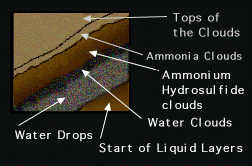This is a drawing of the transition from the atmosphere to the interior.
Click on image for full size
NASA
The Structure of Jupiter's Interior
There is no surface to the giant planets, only a gradual change from the atmosphere, as shown in this drawing.
The gases which Jupiter is mostly made of change to liquid inside Jupiter, but the change is very gradual. Therefore the giant planets do not have strict layers, as the earth-like planets do.
The liquid sections of Jupiter form by far the largest portions of the planet, and penetrate very deep into the planet. The first liquid layer inside Jupiter, immediately under the atmosphere, is the liquid hydrogen layer. Under the liquid hydrogen layer is a liquid metallic hydrogen layer.
At the deepest part of Jupiter is the core, which is probably the size of planet Earth.
You might also be interested in:
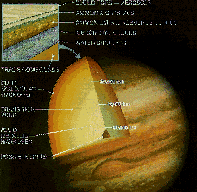
The Giant planets do not have the same layered structure that the terrestrial planets do. Their evolution was quite different than that of the terrestrial planets, and they have less solid material. Jupiter's
...more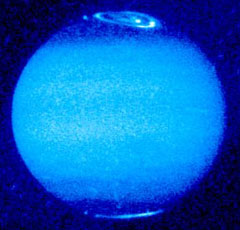
Jupiter has beautiful auroral light shows and other interesting features at its poles. Jupiter has 4 large moons and many smaller ones. Three of the four big moons are covered with ice. They remind us
...more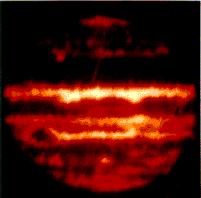
The energy that Jupiter and Saturn make has been found be very high. There are several ways in which astronomical objects make energy from inside. The first is by thermonuclear fusion, the way a star makes
...more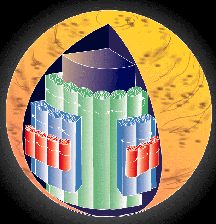
Motions, or currents in the interior of a gas-giant planet such as Jupiter may be very different from the motions typical of the earth's interior. A second idea for the motions in the interior of a gas-giant
...more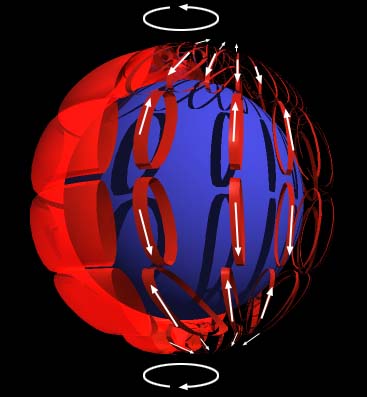
Motions in the interior of a planet help carry heat from the inside to the outside. The drawing to the left illustrates a kind of global motion that is typical of motions in the atmosphere as well as the
...more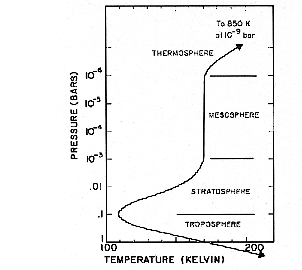
This is the temperature profile of Jupiter's entire atmosphere. The horizontal lines indicate the boundaries between the troposphere, the stratosphere, the mesosphere, and the thermosphere.
...more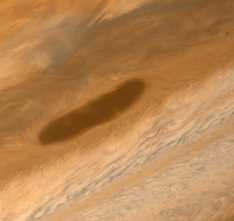
This is a picture of a brown barge. The accompanying clouds, next to the barge, look very similar to earth clouds.
...more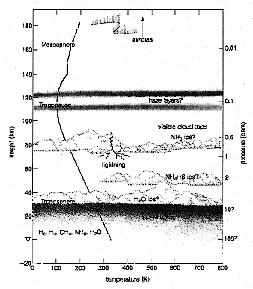
There are three different layer of clouds, or clouddecks, in Jupiter's atmosphere, as shown in this picture. The clouddecks are made of different molecules. The first clouddeck is made of ammonia clouds.
...more


